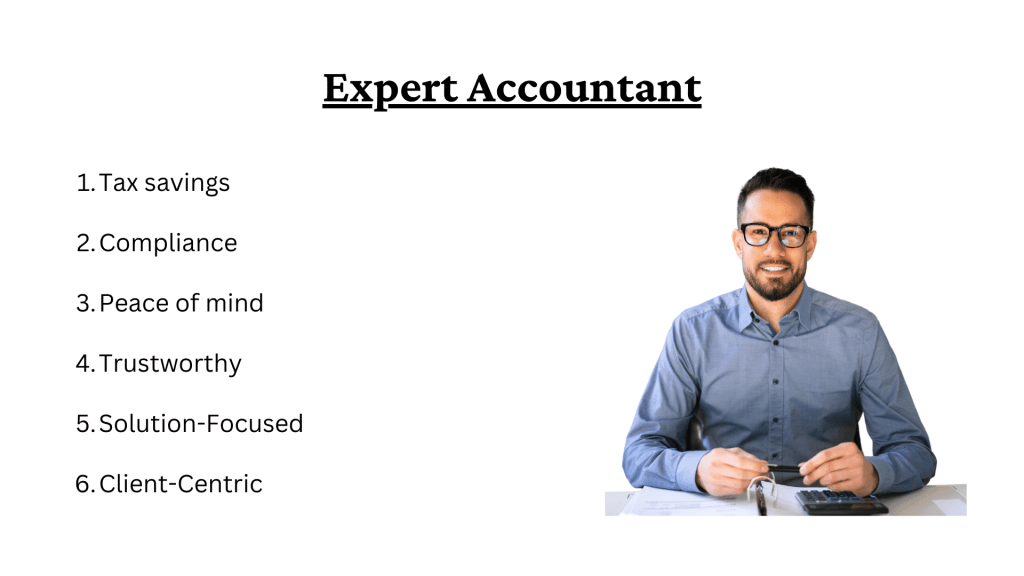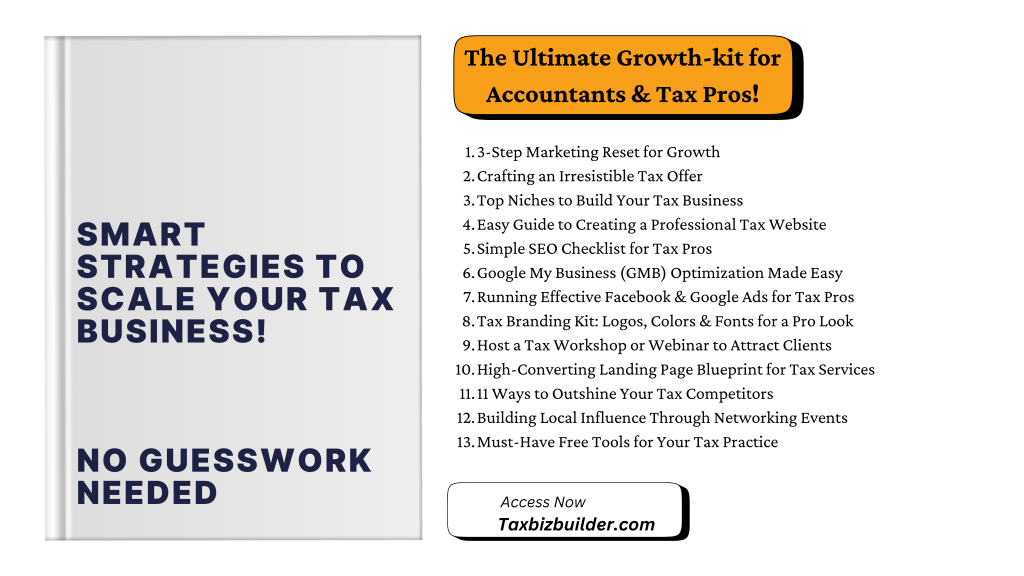If you’re an accountant, you’ve probably thought about raising your prices—but something holds you back. What if clients push back? What if they leave?
Here’s the truth: increasing your pricing is not just an option—it’s a necessity. Costs are rising, your experience is growing, and the demand for quality accounting services is higher than ever. If you don’t adjust your rates, you might be working harder but earning less.
| Who Should Raise Their Prices? |
| You’re overbooked but underpaid. |
| Clients are referring to you often, showing high demand. |
| You’ve gained certifications or expertise that increase your value. |
Yet, the fear remains: “Will I lose clients if I charge more?”
The good news? You don’t have to. When done the right way, you can raise your prices while keeping your clients happy—and even attracting better ones. In this guide, we’ll show you exactly how to do it smoothly, confidently, and without losing the people who value your work the most.
Step 1: Understand Your Value
Before you raise your prices, you need to understand why your services are worth more. Many accountants focus on the numbers, but your real value goes beyond tax returns and bookkeeping.
A good accountant doesn’t just record transactions—they help clients make smarter financial decisions. That’s what makes your service an investment, not an expense. Here’s how:
- Expert Advice Saves Money – Clients often miss out on deductions or financial opportunities. With your guidance, they keep more of their hard-earned money.
- Tax Savings Add Up – A well-planned tax strategy can save thousands of dollars each year. A cheaper service might file taxes, but they won’t optimize for savings.
- Compliance Prevents Costly Mistakes – Errors in tax filings or financial reports can lead to penalties, audits, or even legal trouble. Your expertise protects clients from expensive risks.
- Peace of Mind Has Real Value – Business owners waste time stressing over finances when they could be focusing on growth. You free them up to focus on what matters most.

Now, compare this to what happens when they go with a cheaper alternative:
- DIY Accounting – Clients spend hours trying to figure out complex tax laws, often making costly mistakes.
- Low-Cost Tax Services – These providers rush through filings and miss important tax-saving opportunities.
- Inexperienced Accountants – A lower fee often means less expertise, leading to errors that could cost clients far more than they save.
When clients see that your service protects their money, saves them time, and reduces financial stress, they’ll understand why paying more makes sense. A cheaper option may cost less upfront, but it often leads to bigger losses in the long run.
Your expertise isn’t an expense—it’s an investment in their financial security.
Step 2: Choose the Right Pricing Strategy
Raising prices doesn’t mean shocking your clients with a sudden jump in fees. The key is to do it strategically so they see the value and accept the change without hesitation. Here are three simple ways to do it:
1. The Incremental Increase – Small, Gradual Changes
If you’re worried about client pushback, start small. Instead of a big jump, increase your rates gradually.
- For existing clients, raise prices slightly over time. A 5–10% increase is reasonable and easier to accept.
- For new clients, set your rates higher right away. They don’t know your old pricing, so they won’t resist the change.
This method keeps your long-term clients comfortable while allowing your business to grow.
2. Value-Based Pricing – Charge for Your Impact, Not Your Hours
Many accountants charge by the hour, but that doesn’t always reflect the true value of your work. Instead, price your services based on the financial impact you create.
- If you save a client $20,000 in taxes, does it make sense to charge only a few hundred dollars? Probably not.
- If your guidance helps a business owner make smarter financial decisions, that value is worth more than just your time.
Shift your mindset. Clients are paying for your expertise, not just the hours you spend on their books. When they see how much they gain, they’ll be more willing to pay what you’re worth.
3. Package Pricing – Make Price Increases Feel Justified
One of the easiest ways to raise your prices is to offer bundled services. Instead of charging separately for each task, create packages that include more value.
For example:
- A basic package might cover tax filing and bookkeeping.
- A premium package could include tax strategy, financial consulting, and priority support.
- A VIP package might offer everything plus year-round advisory services.
Clients will focus on what they’re getting, not just the price increase. It also makes your pricing feel more structured and professional.
No matter which strategy you choose, the goal is the same—charge what you’re worth without losing clients. If you communicate your value clearly and introduce changes gradually, clients will understand that they’re paying for expertise, security, and long-term financial benefits.
Step 3: Communicate with Clients the Right Way
Raising prices is easier when clients understand why it’s happening.
1. Notify Clients in Advance
Nobody likes surprise price hikes. Let your clients know before the change takes effect. Keep it simple:
“As part of our commitment to providing top-quality service, we’re adjusting our pricing starting [date]. This allows us to continue delivering the best financial strategies, expert guidance, and support you rely on.”
2. Focus on Added Value
Clients need to see what they’re getting in return. Instead of just saying, “Prices are going up,” explain the benefits:
- Improved tax strategies to save them more money.
- Faster response times and better service.
- More personalized financial guidance.
Frame it as a positive change: “We are improving our services to serve you better.”
3. Show Appreciation
Loyal clients are the backbone of your business. Show them they matter.
- Offer a loyalty discount or grandfather in old pricing for a set time.
- Thank them personally for their trust and partnership.
Clients are more likely to accept higher pricing when they feel valued. Communicate with confidence, focus on value, and show appreciation—it makes all the difference.
Step 4: Add More Value to Justify the Price
A price increase is easier to accept when clients feel like they’re getting more. Even small improvements can make a big difference.
1. Offer Small “Extras”
Adding just a little extra value can make higher prices feel completely justified. Simple things like:
- A free consultation once a year to review their financial strategy.
- Exclusive tax-saving tips tailored to their business or personal situation.
- Priority support, so they get faster responses when they need help.
These don’t take much time but make clients feel like they’re getting VIP treatment.
2. Improve Their Experience
A smoother, more efficient service is just as valuable as money saved. Consider:
- Better reports that are easier to read and provide clearer insights.
- Faster response times so clients always feel taken care of.
Even if you’re charging more, clients will feel like they’re getting a better deal because they’re receiving more value. Small changes can make your new pricing feel like an upgrade, not just an increase.
Step 5: Be Confident and Stay Firm
Your pricing reflects your value. Don’t apologize. Don’t hesitate.
- Believe in your worth. You provide expertise, security, and financial savings—clients are paying for that, not just your time.
- Stand by your decision. If you doubt yourself, clients will too. Present your new rates with confidence.
- Let go of bargain hunters. If a client leaves over pricing, that’s okay. It creates space for clients who respect your value and are willing to pay for it.
The right clients will stay. Charge what you’re worth—and own it.
For strategies on implementing fee increases effectively, the Journal of Accountancy offers valuable insights: When and how to raise fees at your firm.
Increase Accounting Rates, Upgrade Your Practice
Raising your prices as an accountant is a natural step in reflecting the true value of your services. By understanding and communicating the benefits you provide—such as expert advice, tax savings, compliance, and peace of mind—you can implement strategies like incremental increases, value-based pricing, and service packages to adjust your fees appropriately. Clear communication with clients about these changes, coupled with enhancements to your offerings, ensures they perceive the added value. Maintaining confidence in your pricing decisions is crucial; clients who recognize your worth will continue to seek your expertise.

To further support your practice’s growth, consider the TaxBiz Growth-Kit—a comprehensive collection of guides and strategies designed to help you market, grow, and scale your accounting and tax business effectively. This kit addresses common challenges such as client acquisition, branding, and operational efficiency, providing actionable solutions to enhance your practice.

I’m Maqsood, a freelance writer specializing in finance and tech. With experience crafting content for dozens of companies worldwide, I turn complex ideas into engaging stories that connect with audiences. From fintech trends to tax tips, I bring expertise and creativity to every project, delivering content that drives results.


